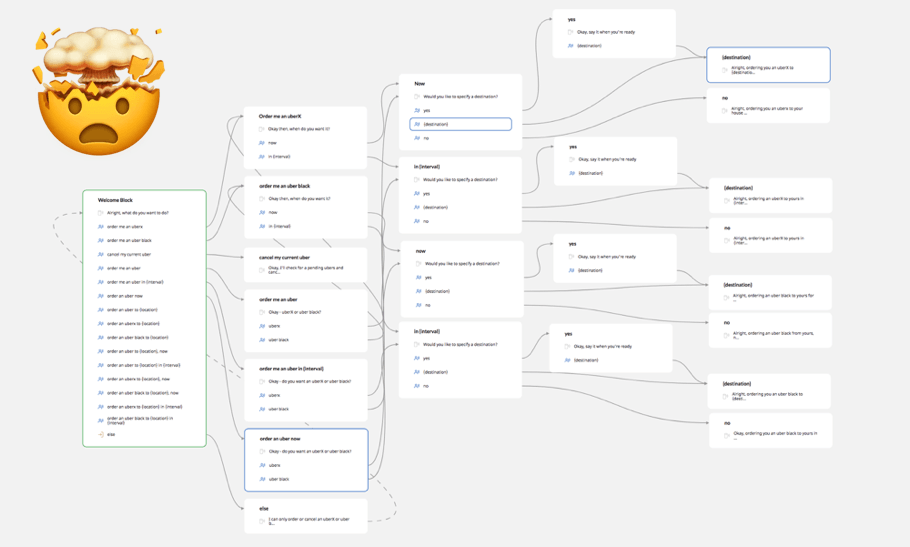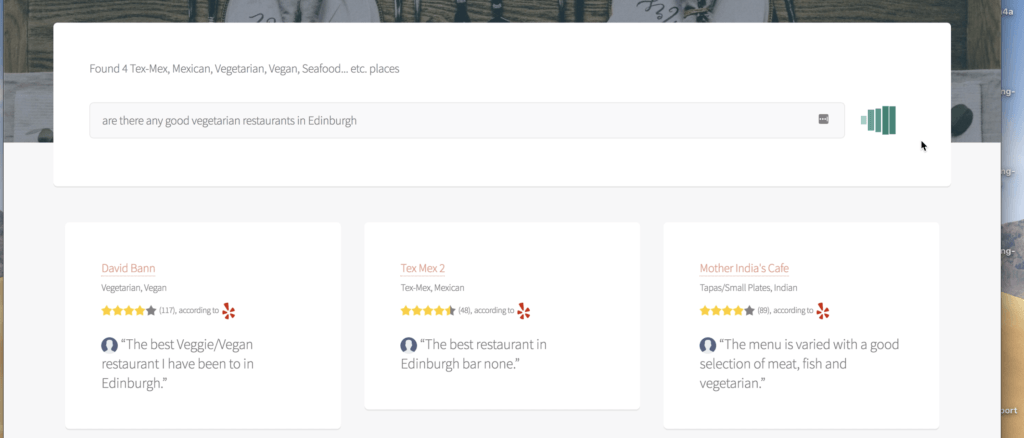If voicebots are going to be truly useful in your contact center, they need to be able to understand customer queries and formulate useful, semantically correct, and appropriate responses.
It’s not just about giving answers. Voicebots need to be able to do the same things your human agents do, such as update customer details in the CRM, take payment details, process transactions, etc.
In the world of academia, there’s a wealth of research underway around making fully autonomous conversational agents that learn in much the same way that humans do. For now, this is the stuff of science fiction – the stuff most people imagine when they think of AI – and while it won’t be science fiction for long, it will be years until this sort of technology is stable enough for businesses to rely on.
We recently wrote about how AI agents understand customer queries (if you haven’t read it, we recommend starting there!). In this post, we’re going to look at how PolyAI voicebots use artificial intelligence to formulate responses to customer queries and take actions based on customer intent.
Feeding the machine the right answers
These days, customer service bots are built on decision-tree style conversational flows. The best of these bots will have thousands of ‘nodes’ – or turning points – that account for every possible fork in the conversational flow. Pre-empting all the possible flows is one problem, but updating them every time there’s a change in process or policy is a nightmare comparable to training thousands of customer service agents.

Just as it’s important for human agents to be armed with all the information they need to solve customer queries, smart voicebots need to have a knowledge base from which they can draw the details they need to formulate responses.
At PolyAI, we use a process we call Content Programming to feed our voicebots the information they need. We upload knowledge bases, policies, third-party data sources, and samples of historical chats to our model. Because our model has already been trained on billions of conversations, it can automatically recognize new information and reply with the most natural response without the need to create or edit a complex decision-tree style conversational flow.
No matter how machine-learning-driven your approach is, you’ll still end up encoding explicit responses based on business logic.

This means we can upload new information to our model at any time without the need for any additional engineering work. Once the model has the information it needs, it automatically rewires and figures out the most appropriate response.
So, if you change a price or add an extra step in your security process, you simply need to drop this information into the knowledge base, and the voicebot will begin disseminating the right responses immediately. Much more straightforward than re-training your whole team!
Accuracy and peace of mind
Rather than scripting out entire conversational flows (as most chatbots currently do), voicebots need to be able to formulate responses based on the available information.
However, there will be certain use cases where accuracy is absolutely vital. And while autonomous voicebots can be very smart, they’re not yet at the point where you should rely on them for everything (see Microsoft Taybot).
No matter how machine-learning-driven your approach is, you’ll still end up encoding explicit responses based on business logic. We see it as a kind of a necessary evil. It’s a bit like your parents teaching you not to swear. You didn’t know you shouldn’t do it – your parents drilled that into you – you learned not to do it (while you were with them at least). While we’d love to handle all conversations through AI, there are situations where businesses need to be certain that voicebots are saying exactly what’s needed.
For example, we made a voicebot to take restaurant reservations. It’s programmed to ask for the exact information it needs to make and complete the reservation, because restaurants can’t save tables if they don’t know how many people to expect, or what time to expect them. But rather than simply filling in a form, we’ve fed the AI loads of knowledge from the restaurants themselves and from public review platforms, so it can answer a huge range of customer queries that we’d never even have considered.
Using context to give smarter answers
Our voicebotss are constantly reassessing the conversation as a whole, and using all of the customer’s previous responses to understand deeper context.
For example, a customer might say ‘I want to cancel my credit card’. But rather than just triggering the ‘cancel card’ flow, voicebots can use the context of the conversation as a whole to give the customer the best options.
So if the customer’s wallet was stolen, the voicebot can go ahead and cancel the card as quickly as possible. But if the customer mentions that they lost their card, the voicebot can offer a temporary card freezing in case it turns up. In this instance, the AI has been able to educate the customer and offer a service that’s preferable to what they thought they wanted.
Sometimes, only humans will do
There will be occasions when even the smartest AI gets stuck: the Automatic Speech Recognition (ASR) technology might fail, or a particular query might require empathy and emotion that the machine isn’t (yet?) capable of (although researchers are actively working on this). Sometimes, only humans will be able to understand and respond appropriately.
Just like human agents, voicebots do fail sometimes. However, voicebots have the ability to seamlessly hand off queries to agents who can solve them. For example, a call might be passed to a human agent because the voicebot wasn’t able to understand the complex circumstances behind the customer’s request. When the call is passed over, it comes with a log and summary of the conversation the customer had with the AI, so the human agent can pick up where the AI left off.
If you have human customer service agents, you can’t completely replace them with voicebots; but you can alleviate the pain of dealing with simple, repetitive queries, and give your team the space to have meaningful conversations with your customers.
In the current state of commercial conversational AI, it’s important for virtual assistants to work alongside human beings in order to create excellent customer experiences.
If you’d like to learn more about automating customer service with conversational AI, get in touch with PolyAI today.




